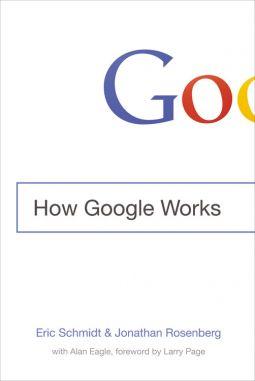Google is no doubt the most amazing – in every sense of the word – company in my lifetime, so far. Always at the forefront of technology, it seems this is one company that has successfully created and maintained the awe and curiosity students feel in the academic environment in big public as well as private research universities.
Everything Google does is different, and so is How Google Works. It is not one of those prescriptive volumes that will talk about Greek philosophers’ views on leadership or how to run a city. The book is a firsthand account of what has worked at Google and what Larry Page and Sergey Brin envisioned when they began the start-up many years ago. The book is written in a witty and humorous narrative style and you will struggle to put it down.
 How Google Works
How Google Works
Authors: Eric Schmidt, Jonathan Rosenberg
Publisher: Grand Central Publishing; Autographed edition (September 23, 2014)
ISBN-10: 1455582344, 978-1455582341
In How Google Works (and it works!), Eric Schmidt and Jonathan Rosenberg talk about everything – from strategy to office interiors, and the politics of it all that brings down the initiative of a proactive rookie in countless multinational behemoths, which then spend millions to rekindle the creativity flame doused years ago, leading to a need of job advertisements calling for ‘hands-on’ managers.
The authors explain what an informal culture really means. Just saying that we have a ‘flat hierarchy’ doesn’t automatically get you the benefits of having truly open communication. A flat hierarchy that segments communication, where a person working in Engineering is threatened by a solution provided by someone in Marketing is not going to get you anywhere.
Leadership is important to propagate the right environment. But not all depends on the top one percent. The organization’s success also depends on the candidates they hire. For open culture, that is so crucial for innovation and creativity, to take a foothold he says this about the role of every associate: ‘For a meritocracy to work, it needs to engender a culture where there is an obligation (for every associate) to dissent.’
I will say this is one book every entrepreneur must read if they truly wish to create an organization that values a culture of innovation and believe in the “may the best man win” mantra. You can make money, a lot of it, by hiring people who will do what you ask them to do; But you can bring change and innovation only if you create an environment where people question without fear.
Hiring is the single most important part of any enterprise. It becomes critical for starts-ups for whom talent is key for success. If you hire toilers you will get a company that can perform repetitive work at peak performance rates, but if you want to build a company that can change the world, you need to hire thinkers and innovators.
The most important advice any entrepreneur can get about hiring is “Hire people who are smarter than you.” This is equally important for organizations of any size. But most often the insecurities of the person hiring get in the way in fulfilling this old and effective rule. The authors dedicate a few chapters to this crucial management function and discusses various do’s and don’ts about hiring and interviewing to spot real talent. The authors emphatically say: “passionate people don’t use the P word.”
You shouldn’t miss How Google Works, it is surely one of the best business books that I have read for some time.